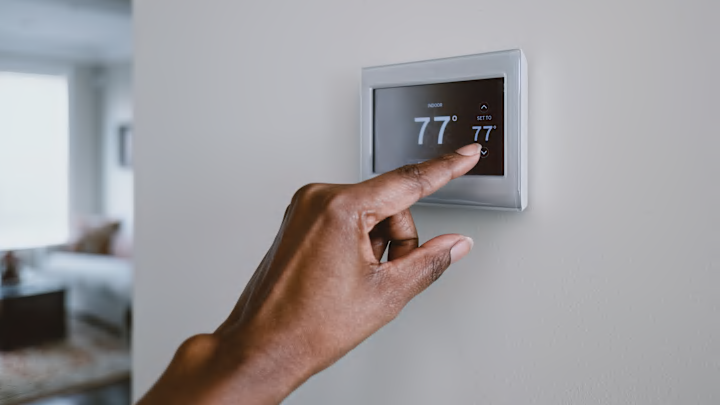If you cook, take medications, or perform laboratory experiments, you’re likely to come across the phrase room temperature. “Store at room temperature,” a pill bottle might suggest. “Thaw at room temperature,” a recipe could offer.
Obviously, bringing something to room temperature doesn’t mean tossing it in the freezer or letting it bake in the sun. But what exactly does it refer to?
- What Qualifies as ‘Room Temperature’?
- What Room Temperature Means in Cooking
- How to Store Medication at Room Temperature
What Qualifies as ‘Room Temperature’?
According to Merriam-Webster, the definition of room temperature is “a comfortable temperature that is not too hot or too cold” as well as an environment that is “suitable for human occupancy.” That might be anywhere from 59 to 77°F.
That’s a pretty broad range. But for most people, a room temperature of 70°F is neutral. Room temperature is essentially a euphemism for a lack of extremes.
What Room Temperature Means in Cooking
Room temperature can act as a yardstick for your own particular circumstances. Say a recipe calls for something (like butter) to sit out at room temperature for 30 minutes. During the summer in a room without air conditioning, your actual room temperature might be 75°F or even 80°F. If you need to take something out of the fridge to soften or warm it, it’s likely to take less than 30 minutes. For something like pie dough, which might become difficult to handle in a warmer room, you might consider refrigerating it first. Room temperature gives you a guideline to work with.
How ingredients are stored can make a big difference in food. If flour is stored when it’s too hot, it might dry out and need more water; room temperature cream might not whip up properly.
Room temperature also plays a vital role in food safety. Allowing perishable foods to sit at room temperature for extended periods can invite bacterial growth. They should be either chilled (below 41°F) or kept warm (above 135°F).
How to Store Medication at Room Temperature
Food isn’t the only concern. Medication bottles and pharmacy inserts will often instruct people to “store at room temperature.” As noted, this means a temperature comfortable to humans. But when it comes to prescriptions or over-the-counter medication, there’s a little more to it.
Your bathroom, for example, might be considered room temperature for most of the day, but when steam builds up from your morning shower, it becomes humid. Likewise, your kitchen might be comfortable for your skin, but a shelf above the stove can absorb a lot of radiant heat. Storing medication in these places doesn’t really meet the definition of room temperature.
Why is that important? Medication can lose efficacy when exposed to heat and humidity. Depending on a person’s dependency, a lowered dose of a drug could have serious health implications. Medication schedules and expiration dates are usually based on room temperature conditions, and their quality is uncertain if left in a 85°F apartment.
Room temperature isn’t an exact science—it’s simply an indication that your environment should be comfortable. If you need a jacket or you’re sweating indoors, then you’re likely outside of the norm.
Get Answers to More Big Questions:
